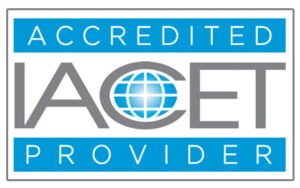16-Hr Rigging Worker
Description:
The 16-Hour Rigging Worker (CRA-103) course is a comprehensive training program designed for individuals involved in rigging operations in the construction industry. This course focuses on providing participants with the knowledge and skills necessary to perform rigging tasks safely and effectively.
During the course, participants will learn about different types of rigging equipment, including slings, shackles, hoists, and cranes. They will gain an understanding of rigging safety regulations, standards, and guidelines, ensuring compliance and promoting a safe work environment.
The training will cover topics such as load calculations, rigging techniques, equipment inspection and maintenance, signaling and communication, rigging hardware, proper lifting methods, and safe work practices. Participants will also learn about hazard recognition, risk assessment, and the importance of conducting pre-use inspections to ensure equipment integrity.
Through a combination of informative presentations, demonstrations, hands-on activities, and simulations, participants will develop the skills necessary to perform rigging tasks safely and efficiently. The course will emphasize practical techniques, industry best practices, and compliance with relevant safety standards and regulations.
Language: English
Duration: 16 Hours
Course Code: CRA-103
Learning Objectives:
- Understanding Rigging Safety Regulations: Participants will gain knowledge of relevant rigging safety regulations, standards, and guidelines, including OSHA and DOB requirements, ensuring compliance with current requirements.
- Load Calculations and Rigging Techniques: Learners will develop the skills to calculate load capacities, select appropriate rigging equipment, and implement proper rigging techniques for various loads and lifting scenarios.
- Rigging Equipment Inspection and Maintenance: The course aims to educate participants on the importance of regular equipment inspections, proper maintenance, and the identification of potential defects or hazards associated with rigging equipment.
- Signaling and Communication: Participants will learn effective signaling and communication techniques used in rigging operations to ensure clear communication between riggers, crane operators, and other personnel involved in the process.
- Rigging Hardware and Equipment Selection: Participants will familiarize themselves with different types of rigging hardware, including slings, shackles, hoists, and cranes, and gain an understanding of their proper selection and usage.
- Proper Lifting Methods and Techniques: The course will cover proper lifting methods, including rigging configurations, load distribution, center of gravity, and stability considerations to ensure safe lifting operations.
- Hazard Recognition and Risk Assessment: Participants will develop the skills to identify potential hazards associated with rigging operations, assess risks, and implement appropriate control measures to mitigate those risks.
- Safe Work Practices: The course emphasizes safe work practices during rigging operations, including personal protective equipment (PPE) usage, fall protection, securement methods, and maintaining a clean and organized work area.
- Practical Application and Hands-On Activities: Participants will engage in practical activities, demonstrations, and simulations to apply their knowledge and skills in realistic rigging scenarios.
Requirements
- To perform rigging or signaling work in conjunction with the hoisting or lowering of articles on the outside of a building with hoisting equipment, an individual must either (i) complete this course, (ii) possess a Department-approved national rigging certification, or (iii) be employed by a licensed Rigger.
- There are no prerequisites needed to attend this course.
Features
- CEUs: 1.6
- CEU Requirements: 100% attendance for the course.
- Completion of IACET Registration Form
- Active participation in all class exercises
- As applicable, achievement of minimum passing score on required end-of-course examination
- Participation and submittal of end-of-course evaluation form
Target audiences
- This training is geared towards individuals who perform rigging or signaling work in the construction trades in New York City.

